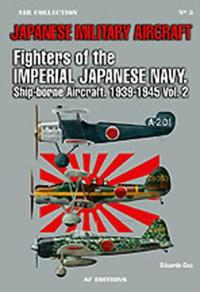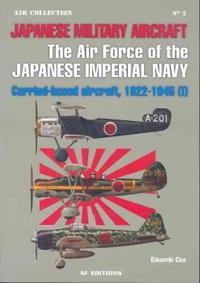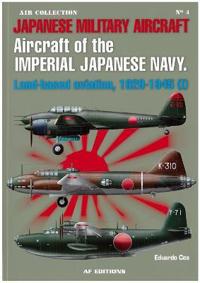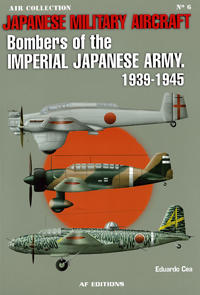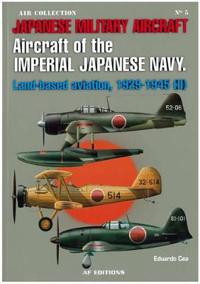Air Force of the Japanese Imperial Navy (Pocket)
avEduardo Cea, Eduardo Cea, Sally-Ann Hopwood
ISBN: 9788496935051 - UTGIVEN: 200810At the beginnning of World War II, the Imperial Navy had created the finest naval aviation corps in the world. Japanese aircraft were at least the equals of anything then flying in the West, and in some cases (as with the legendary Zero Fighter) were substantially better. Japanese aircrews were supe[...]
Japanese Military Aircraft (Häftad)
avEduardo Cea
ISBN: 9788496935044 - UTGIVEN: 200804At the beginnning of World War II, the Imperial Navy had created the finest naval aviation corps in the world. Japanese aircraft were at least the equals of anything then flying in the West, and in some cases (as with the legendary Zero Fighter) were substantially better. Japanese aircrews were supe[...]
Japanese Military Aircraft (Häftad)
avEduardo Cea
ISBN: 9788496935105 - UTGIVEN: 200903Japan was isolated from foreign influence for thousand years, with hardly any influence from the outside world, during which it developed a very particular culture different form the West. It became involved in the "Culture of Western Welfare" at the end of the 19th century. In this background the J[...]
Bombers of the Imperial Japanese Army 1939-1945 (Häftad)
avEduardo Cea
ISBN: 9788496935235 - UTGIVEN: 201012After a historical introduction to the creation of the army aviation, it dedicates a chapter to the organization and major battles in the conquest and occupation of Manchuria and war with China, as well as the incident of the Nomohan against Soviet aircraft. In the second section, it gives a brief h[...]
Aircraft of the Japanese Navy: Land-based Aviation, 1929-1945 (II) (Häftad)
avEduardo Cea
ISBN: 9788496935242 - UTGIVEN: 201012This second volume of the naval aviation of Imperial Japan during World War II relates the history of land-based units, which corresponded to a numeral nomenclature chronological, unlike the first volume, whose units had the name of air base where they were organized.[...]
Special Units of the Imperial Army (Häftad)
avEduardo Cea
ISBN: 9788496935365 - UTGIVEN: 2011-12Complete with comprehensive statistics and amazing colour artwork In this beautifully illustrated book, Eduardo Cea goes into fascinating detail of each of the Special Units and Special Attack Units, commonly known as kamikaze units in the Imperial Navy, or the SimBu-Tai in the Imperial Army, in tu[...]

